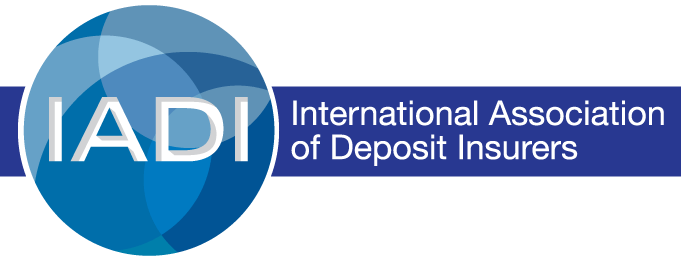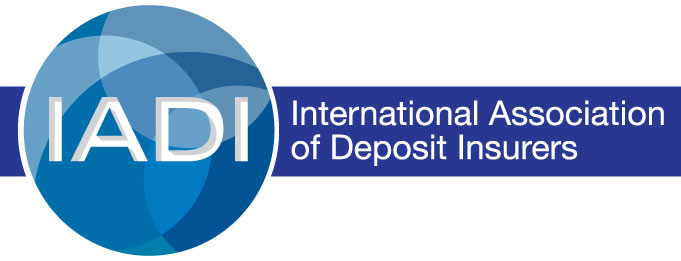From Water Storage to Financial Security: Aligning Deposit Insurance and Resolution Funding with Financial Stability Objectives
Remarks by Eva Hüpkes, IADI Secretary General, during the IADI Africa Regional Committee (ARC) 2025 Annual Meeting and Conference
Good morning,
It is a privilege to address you today at the IADI Africa Regional Committee Annual General Meeting and Conference. It provides valuable opportunity to reflect on the critical role of deposit insurance and resolution in safeguarding financial stability in the African region.
I warmly welcome the Chief Guest, Hon FCPA John Mbadi, EGH, Cabinet Secretary, National Treasury and Economic Planning; Dr Kamau Thugge, Governor of the Central Bank of Kenya; Dr Julia Oyet, Chairperson of the Africa Regional Committee and Chief Executive Officer of the Deposit Protection Fund of Uganda; and Mrs Hannah W. Muriithi, EBS, Chairperson, and Members of the Kenya Deposit Insurance Corporation Board. I would like to extend my special gratitude to Ms Hellen Chepkwony, Chief Executive Officer, Kenya Deposit Insurance Corporation and Member of the IADI Executive Council, and her staff at the Kenya Deposit Insurance Corporation for welcoming us here and making this meeting and conference a success.
In my remarks, I would like to focus on what lies at the core of deposit insurance – robust funding – and on the use of deposit insurers’ funds in in pay-out and non-pay-out resolutions.
Let me begin with an image from our host country– Kenya a beautiful country with its stunning landscapes and wildlife. Kenya faces constant challenges of drought and water scarcity. Communities here have turned to rainwater harvesting, building storage systems that ensure water for drinking, farming, and livestock. In Switzerland, where I come from, we also store water. We use Alpine reservoirs to collect water from rainfall and snowmelt, generating electricity to power our lives.
These images of water storage reflect the essence of deposit insurance funding and the importance of preparation in securing a stable future. Just as the collection of water provides relief during droughts and generates energy, deposit insurance funds protect depositors and contribute to financial stability during periods of uncertainty. To achieve this, we must build our own mechanism to store water – in other words, we need to ensure that our reserve is adequately funded.
Deposit insurance funding and backstop arrangements
The Core Principles stress the importance of deposit insurers having readily available funds to protect depositors in the event of a bank failure and to do so without having to rely on taxpayers. The members of the deposit insurer bear the responsibility for building the funds through regular contributions. A proposed revision to the Core Principles seeks to encourage a wider adoption of differential premium systems to incentivise prudent behaviour and reduce cross-subsidization of risk.[1] A target fund size is a cornerstone of sound funding practices. Transparent metrics, a regular review and reasonable timeframe to achieve them are key underpinnings.[2]
The fund’s investment policies must prioritise the preservation of capital and liquidity and limit exposure to insured institutions. To ensure the safety and liquidity of their reserves the Core Principles expect deposit insurers to have the option to hold funds with the central bank. In 2024, 49 percent of IADI members were holding funds with their central bank.
The Core Principles also expect deposit insurers to have in place arrangements that enable them to access additional resources for severe stress scenarios (‘extraordinary funding arrangements’). Such arrangements could involve mechanisms to access market funding directly or arrangements with other financial safety-net participants.
How can the deposit insurer keep its promise to depositors to compensate them up to the insured amount in such extreme scenarios? There are naturally limitations to private market-based funding, particularly in extreme scenarios, such as simultaneous institution failures. As a last resort measure public backstops therefore are a critical complementary tool to safeguard depositor confidence. However, public backstop must not undermine market discipline. To mitigate moral hazard public backstop arrangements must have clear terms and conditions and recovery mechanisms that ensure that ultimately repayment costs are borne by members of the deposit insurer, not taxpayers. Backstops should be agreed ex-ante, for example, through memoranda of understanding with relevant financial safety net participants, such as the Ministry of Finance and potentially with the central bank as the government’s fiscal agent. Our latest survey data shows that three out of four deposit insurers have in place a public backstop funding facility.
Use of deposit insurance funds in resolution
Let me now discuss the use of deposit insurance funds in resolution. Like stored water, which can be used for drinking, agriculture, or energy, the way deposit insurance funds are used to protect depositors can vary:
Deposit insurers may operate under different mandates, ranging from a paybox mandate, focused on deposit payouts, and a paybox-plus mandate, which includes participation in resolution processes, to loss and risk minimiser mandates. The latter integrate deposit insurance functions with resolution responsibilities and, in the case of risk minimisers, supervisory functions.
Historically, the primary role of deposit insurers was to ensure the timely payout of insured deposits in the event of a bank failure. However, with the introduction of resolution regimes following the adoption of the FSB Key Attributes as international standard for resolution, the frequency of deposit payouts has declined. At the same time a growing number of deposit insurer assumed some role in resolution. Since 2014, the proportion of paybox-plus deposit insurers has increased from 36% to 51%. When combined with loss and risk minimisers, these deposit insurers now represent 89% of all deposit insurers in 2024, compared to 75% in 2014.[3]
Non-payout resolution powers, such as deposit transfers and sale of business, often more cost-effective than pay-outs and better aligned with financial stability objectives as they help to maintain the continuity of deposit taking services. This is of growing importance in an era of 24/7 internet banking and evolving depositor expectations.
How can deposit insurance funds be used to facilitate deposit transfers or other resolution actions, and what are the conditions for use? Not surprisingly, this is one of the areas of focus in the ongoing review of the IADI Core Principles.
Where the deposit insurer is not the resolution authority but is expected to provide funds to implement a resolution measure, the deposit insurer should be closely involved in the deliberations regarding the selection of the most suitable resolution tool. Key factors shaping the choice of the most suitable resolution tools will include:
- The cost-effectiveness of the resolution and its costs to the deposit insurance fund. The resolution measure should minimise the risk that additional funding obligations for the deposit insurer arise later and ensure that its net contributions do not exceed the estimated net costs of depositor reimbursement in liquidation, accounting for expected recoveries. Gross contributions must not exceed the total insured deposits at the failed institution. Deposit insurers in many jurisdictions implement a ‘least cost’ or ‘lesser cost’ test as part of their resolution framework.
- The availability of suitable acquirers. Transfers or sale of business transactions may be suitable for smaller institutions. Potential acquirers may be easier to identify for smaller than for larger and more complex institutions. Strategies for larger institutions where the objective is to maintain vital economic functions seek to maintaind critical economic functions as provided for in the FSB key Attributes. the aim is to may be creditor-financed recapitalisations (‘bail-ins’) or bridge banks to help to maintain critical operations.
- The extent to which the continuity of the deposit taking function can be maintained. ensuring insured depositors’ access to their funds and minimising disruption of critical economic functions. The extent to which the resolution action limits taxpayer exposure to the risk of loss, prevents systemic disruptions and potential for further contagion, and mitigates moral hazard risk. For example, where deposit insurance funds are used in exceptional circumstances for recapitalisation, the Core Principles expect a full prior write-down of equity.
- The extent of cross-border complexities and operational challenges. that could affect its success, e.g. whether certain business lines can be easily separated and transferred without legal or operational challenges.
The selection of a resolution tool will inevitably depend on the specifics of each case. The revised Core Principles emphasise the need for explicit arrangements between deposit insurers and other financial safety-net participants that ensure the timely involvement of all relevant parties to provide their input in selecting the most suitable resolution tool. The involvement of deposit insurers should help to ensure that the eventual selection of the most suitable resolution tools balances the protection of insured depositors, the maintenance of financial stability, the mitigation of moral hazard, while minimising costs to the deposit insurers. It is also crucial to have robust governance and accountability mechanisms in place to clearly document the decision-making process—how the decision was reached, who was responsible, and the grounds on which it was based. As demonstrated by events in 2023, resolutions are often subject to intense public scrutiny, underscoring the importance of transparency and clarity of roles and responsibilities in such processes.
Conclusion
A well-funded deposit insurance system and effective collaboration among deposit insurers, resolution authorities, and other financial safety-net participants are critical to maintaining public confidence and financial stability—similar to the importance of water storage for our livelihood. Over the next few days, discussions on the revised Core Principles and funding mechanisms will provide valuable insights into the evolving role of deposit insurers. I encourage you to actively engage, share experiences, and explore innovative solutions to our shared challenges.
[1] Revised Core Principles – IADI | International Association of Deposit Insurers
[2] The median target fund size across IADI membership is currently approximately 0.8% of total covered deposits.
[3] See IADI Annual Global Trends Report (forthcoming).

